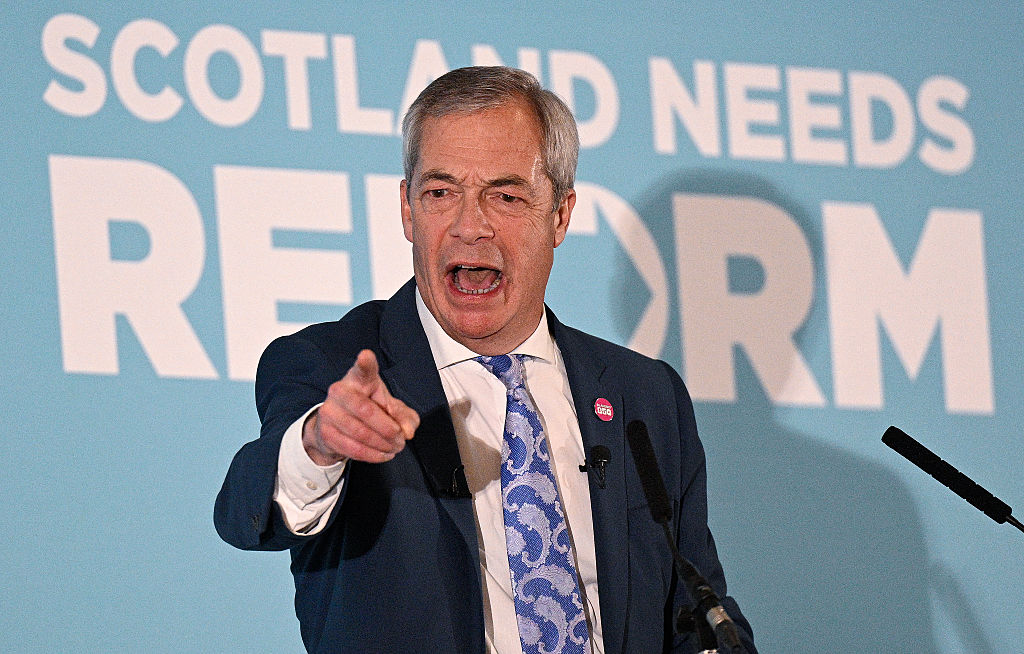The best ways to invest in Vietnam – Asia’s communist dynamo
Vietnam has long been one of our favourite markets. The prognosis remains auspicious, says Alex Rankine.

Investors complain that complex planning rules thwart infrastructure projects. Administrative bloat is blamed for burdening the state budget. Sound like Britain? It’s not.
This is Vietnam, and the government is responding in a decidedly non-Whitehall way.
The one-party communist state is going all-out for growth, announcing sweeping reforms dubbed a “bureaucratic revolution”.
MoneyWeek
Subscribe to MoneyWeek today and get your first six magazine issues absolutely FREE

Sign up to Money Morning
Don't miss the latest investment and personal finances news, market analysis, plus money-saving tips with our free twice-daily newsletter
Don't miss the latest investment and personal finances news, market analysis, plus money-saving tips with our free twice-daily newsletter
Hanoi plans to slash at least one in five civil service positions, and to abolish a quarter of government agencies. Major ministries are to be merged, says David Hutt in Deutsche Welle. The idea is for there to be more coherent government and less red tape.
How Vietnam is winning the trade war
MoneyWeek has liked Vietnam for a long time, but it has been a “sleeper hit”. While nearby Asian giants hog the headlines, the country’s consistently strong, compounding growth story has flown just below the market radar. In the mid-1980s Vietnam was one of the world’s poorest nations. Then, market-friendly reforms (known as the “Doi Moi”, meaning “renovation”) transformed the war-wrecked economy into a global manufacturing powerhouse. GDP per capita has risen more than fivefold since the mid-2000s.
Today the nation of 100 million is among the workshops of the world. Shoes and clothing produced by the likes of Nike, Crocs and Adidas increasingly bear the label “Made in Vietnam”. Electronics are booming, with Sony, Panasonic, Intel and LG all scrambling to set up factories. Korean giant Samsung alone has invested more than $22 billion building up capacity in Vietnam, says The Wall Street Journal. Today, Apple has 35 suppliers in the country, triple the number it had before Trump’s first-term trade war with China.
Vietnam was one of the major winners of the 2018 US-China trade split. Many multinationals hedged their bets by moving parts of their supply chains the short hop south of the Sino-Vietnamese border. Vietnam’s economy used to be dominated by the entrepreneurial, formerly capitalist south. The investment influx has helped the more statist north catch up. Rice paddies in once-sleepy towns near Hanoi – the seat of government – have given way to billion-dollar factories that assemble smartphones and semiconductors for the world.
Donald Trump is back in the White House, but it’s not clear that Vietnam will be a winner of a trade war re-run. Hanoi hasn’t been targeted in Trump’s first tariff flurry, but investors haven’t forgotten 2019, when he branded Vietnam “almost the single worst abuser” of US trade. The country has become a victim of its own manufacturing success. Its trade surplus with America exceeds $100 billion, the third largest in the world after China and Mexico. Trump, once he’s finished quarrelling with Canada and Mexico, is sure to notice. US unpredictability is a huge source of risk for Vietnam, says Gareth Leather of Capital Economics. A tenth of Vietnamese GDP stems from US consumption of goods produced in the country.
That said, there are reasons for optimism. Trump didn’t directly mention Vietnam on the campaign trail. He has mulled imposing a 10% “universal tariff” on all foreign imports, but that would establish a “level playing field” and wouldn’t stop Vietnam’s exporting momentum. The big risk is that Washington singles out Vietnam for higher tariffs, but there could be scope for leaders to negotiate a deal. For one thing, Hanoi could crack down on the re-routing of Chinese wares through its territory, a common strategy to dodge US tariffs, but one from which Vietnam gains little economically. Officials could also offer to buy more US soybeans, corn and Boeing aircraft to get on Trump’s good side.
Foreign investors in Vietnam are not directly exposed to much of the export economy, which is in the hands of foreign-owned (especially Korean and Japanese) multinationals. Local stocks are dominated by financials (27.5% of the MSCI Vietnam index), real estate (25%) and consumer-facing businesses (17%). But the export sector keeps the rest of the economy running, and a trade downturn would be painful for everyone.
For British investors, there are two main London-listed funds to buy into the Vietnamese growth story: Dragon Capital’s Vietnam Enterprise Investments (LSE: VEIL), which focuses on listed stocks and pre-flotation opportunities, and the VinaCapital’s Vietnam Opportunity Fund (LSE: VOF), which takes in a broader range of assets including private equity. VEIL has gained a third over the past five years, with VOF up 47%.
The local VN equity index has returned 10% over the past year, but sentiment appears shaky. In the Biden years the financial press was full of stories about the genius of Vietnam’s supple “bamboo diplomacy”, which helps it thrive by trading with different geopolitical blocs. Yet recently the tone has darkened, with headlines asking whether Vietnam will be Trump’s next target.
Domestic politics has also unnerved investors, with complex political manoeuvring seeing the country go through four presidents in three years. However, that rocky period now appears to be over, says Alexander Vuving in The Diplomat. The newly consolidated leadership has acted with “dizzying speed”, rolling out plans for new infrastructure and radical administrative reform designed to make government more efficient.
Weak sentiment makes for reasonable entry prices. “Market valuations remain attractive,” says Khanh Vu in the Vietnam Opportunity Fund’s December fact sheet. On 10.3 times forward earnings, valuations are one standard deviation below the ten-year average. Add in forecast 13%-15% earnings growth for listed companies in 2025 and you have a decent set-up for a stock market upswing – just as long as Trump doesn’t spoil the party.
This article was first published in MoneyWeek's magazine. Enjoy exclusive early access to news, opinion and analysis from our team of financial experts with a MoneyWeek subscription.
Get the latest financial news, insights and expert analysis from our award-winning MoneyWeek team, to help you understand what really matters when it comes to your finances.
Alex is an investment writer who has been contributing to MoneyWeek since 2015. He has been the magazine’s markets editor since 2019.
Alex has a passion for demystifying the often arcane world of finance for a general readership. While financial media tends to focus compulsively on the latest trend, the best opportunities can lie forgotten elsewhere.
He is especially interested in European equities – where his fluent French helps him to cover the continent’s largest bourse – and emerging markets, where his experience living in Beijing, and conversational Chinese, prove useful.
Hailing from Leeds, he studied Philosophy, Politics and Economics at the University of Oxford. He also holds a Master of Public Health from the University of Manchester.
-
 The war dividend – how to invest in defence stocks as the world arms up
The war dividend – how to invest in defence stocks as the world arms upWestern governments are back on a war footing. Investors should be prepared, too, says Jamie Ward
-
 Literacy Capital: A trust where great returns fund a good cause
Literacy Capital: A trust where great returns fund a good causeThere’s plenty to like about specialist private-equity trust Literacy Capital, says Max King
-
 An AI bust could hit private credit – could it cause a financial crisis?
An AI bust could hit private credit – could it cause a financial crisis?Opinion Private credit is playing a key role in funding data centres. It may be the first to take the hit if the AI boom ends, says Cris Sholto Heaton
-
 8 of the best ski chalets for sale now
8 of the best ski chalets for sale nowThe best ski chalets on the market – from a traditional Alpine-style chalet in Switzerland to an award-winning Modernist building in Japan’s exclusive ski areas
-
 Did COP30 achieve anything to tackle climate change?
Did COP30 achieve anything to tackle climate change?The COP30 summit was a failure. But the world is going green regardless, says Simon Wilson
-
 Who is Christopher Harborne, crypto billionaire and Reform UK’s new mega-donor?
Who is Christopher Harborne, crypto billionaire and Reform UK’s new mega-donor?Christopher Harborne came into the spotlight when it emerged he had given £9 million to Nigel Farage's Reform UK. How did he make his millions?
-
 The best Christmas gifts for your loved ones
The best Christmas gifts for your loved onesWe round up the best Christmas gifts with a touch of luxury to delight, surprise and amaze family and friends this festive season
-
 Leading European companies offer long-term growth prospects
Leading European companies offer long-term growth prospectsOpinion Alexander Darwall, lead portfolio manager, European Opportunities Trust, picks three European companies where he'd put his money